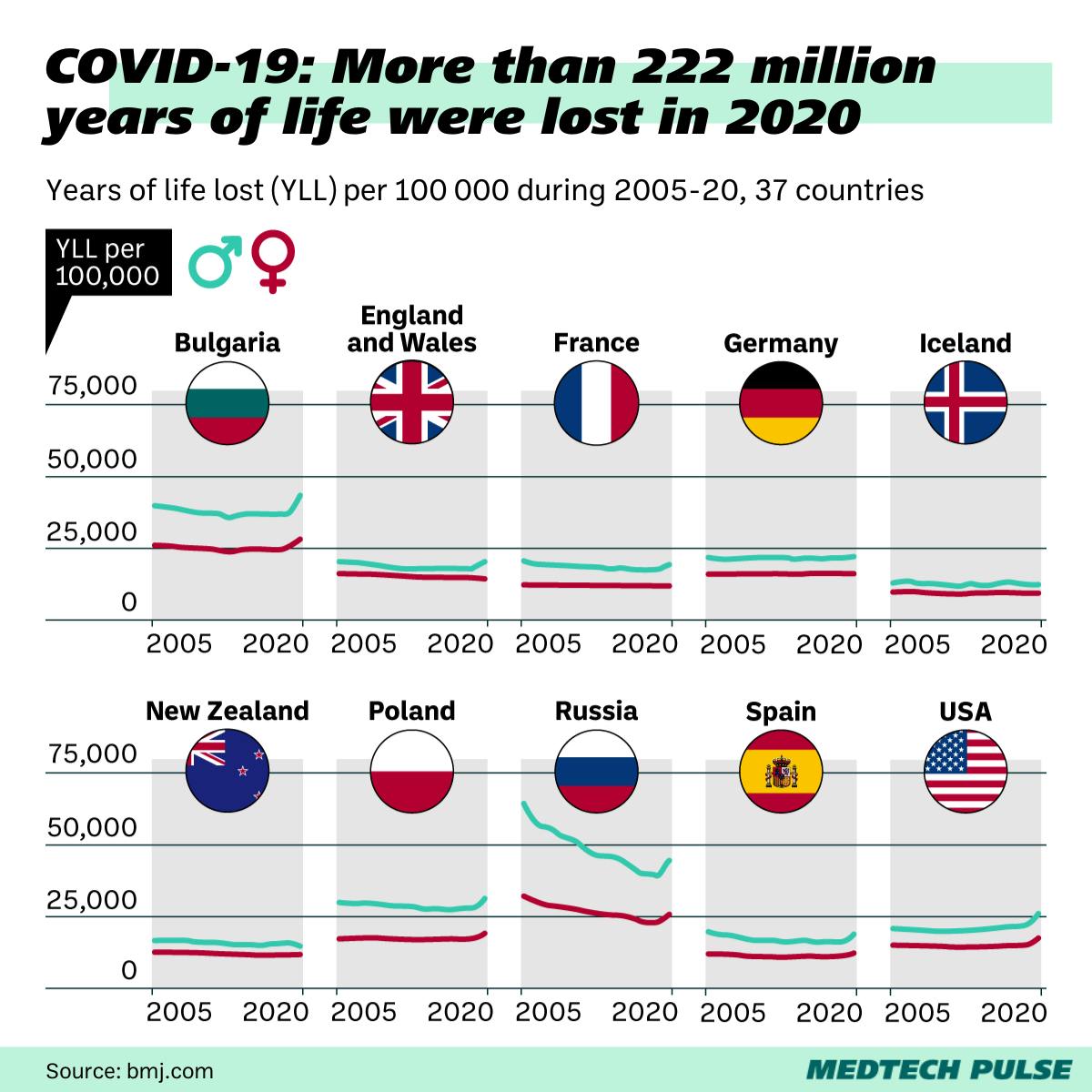Medtech helps us live longer lives
What killed Beethoven? The new findings of Beethoven’s sequenced genome are fascinating and prove how far mankind and science have come. The research gives us answers about his recent ancestry and cause of death. What we already knew: Severe liver disease culminated in his death in 1827. What the team of scientists also discovered: a number of significant genetic risk factors for liver disease. The medical care and preventive measurements we have nowadays probably would have prolonged his life.
Progress in medicine has led life expectancy to increase from 45 years in 1850 to almost 80 years today—a trend to be continued. What will be the maximal life expectancy humans may one day have? We don’t know yet. But we do know that medtech makes a big contribution to prolonging life. Innovation in preventive care, medical treatments, and prognosis do and will further impact mortality.
As we can see with the COVID-19 pandemic, there is always the risk of external factors impacting the life expectancy of societies. The pandemic affected not only one nation but whole continents. And it started a race against time—in terms of finding cures and prevention for a disease that continues to spread and causes long-term symptoms, known as Long COVID. A study examined the effects of the COVID-19 pandemic on life expectancy and premature mortality in 2020 via a time series analysis in 37 countries. Between 2005 and 2019, the combined years of life lost declined in most countries. In 2020, the observed YLL was higher than expected in most countries, with small exceptions, e.g., New Zealand.

To give you a total number: More than 222 million excess years of life were lost in 2020 in 31 countries. The Lancet states: “as the COVID-19 pandemic continues, the need to understand and respond to long-term effects of the infection is increasingly pressing. The full range of long-term health consequences of COVID-19 is yet to be described…”
How can medtech help? Events such as the ongoing pandemic force medicine to offer solutions—and fast. But we not only need solutions dealing with the immediate disease itself. We must also set a focus on preventive care and especially access to care, creating a healthier society overall. As we can see, the lack of good access to primary and preventive care in the U.S. has consequences, shown in this episode's chart of the week. Also, approaches like virtual primary care—as described in our second insight topic—could be part of the solution. Even new tech-enabled therapies like medical VR can increase the arsenal of preventive care.
We can thus see—there is movement in this field that will ultimately lead to a healthier society. After all, a society that is able to live longer is a healthy one.
